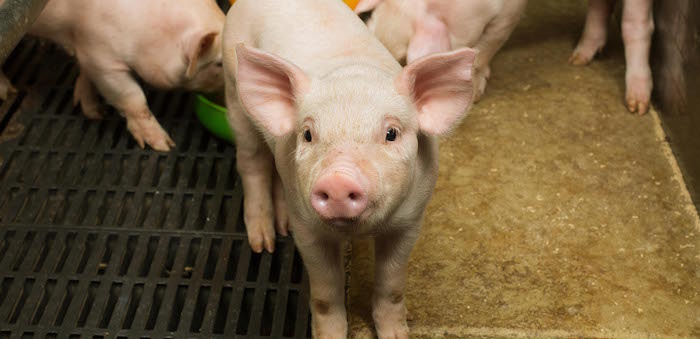According to the latest figures from Statistics Denmark, the number of pigs in Denmark on 1 October was 3% higher than year earlier levels.
This represents an increase in the rate of expansion since the July census, when the total pig herd had only grown 1% on 2016. Growth in numbers of sows, piglets, and weaners under 50kg drove the overall increase.
The female breeding herd was up 3% overall, with a 2% expansion recorded for in-pig sows and in-pig gilts within this. This is likely to result in continued higher piglet production in at least the first half of 2018. Looking further forward, with the number of maiden gilts also growing 3%, further expansion might be expected in the mid to long term.
According to AHDB analysis, the increasing breeding herd has already had an impact on both piglet and young pig numbers, which were up by 6% and 4% respectively on 2016. However, this failed to be translated into higher numbers of slaughter pigs (over 50kg), which were still down 2% on a year ago. This reflects the trend towards exporting live weaners for finishing and slaughter. Live pig exports were 5% higher year on year between January and July, according to the Danish industry association.
As such, while pig numbers have been moving up since July, Danish slaughterings are still reportedly 5% behind year earlier levels for the 44 weeks of the year so far.

Lower domestic production also seems to have limited export capacity, with total pig meat exports down 5% on 2016 for the first seven months of the year. This includes a 7% drop in shipments to the UK, although this was driven by falling bacon exports which is at least partly due to a move towards processing this in the UK. Nonetheless, as the number one pig meat supplier to the UK market, lower production may have helped ease import pressure in the UK this year.
Looking forwards, however, the Danish slaughter industry has been attempting to inspire domestic production by offering special bonuses and purchase contracts this year. This, coupled to increasing supplies, could see production return to growth in 2018; recent Danish industry association forecasts anticipate the expansion to be around 3% year-on-year. As such, there may be more Danish pork available for export to the UK next year.




